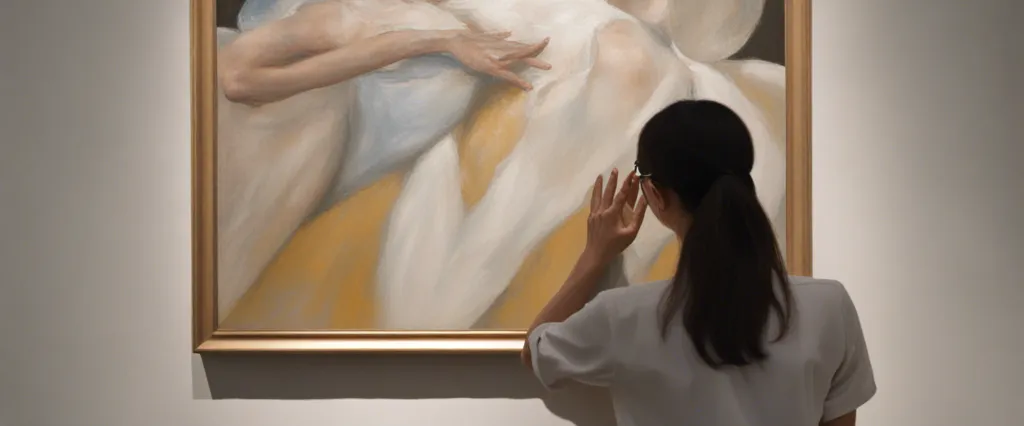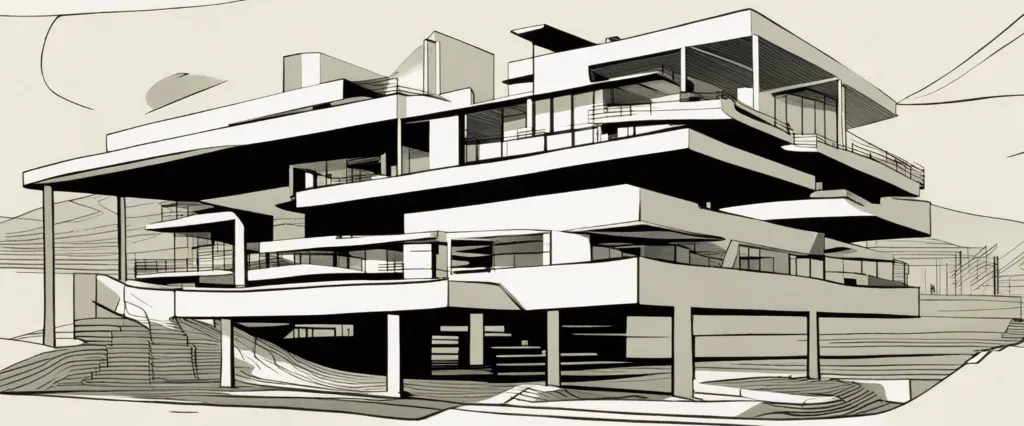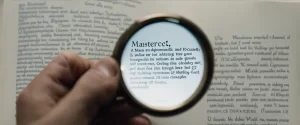
In the realm of visual arts and architectural theories, there exist countless influential works that have shaped our understanding of space, perception, and human interaction with the built environment. Among these seminal works, two books stand prominently: “Ways of Seeing” by John Berger and “Towards a New Architecture” by Le Corbusier. These remarkable texts, written in different eras by two visionary thinkers, explore the relationship between art, architecture, and society, offering distinct perspectives on how we engage with and perceive the visual world.
Published in 1972, “Ways of Seeing” by British art critic John Berger revolutionized the way we understand our visual culture. Through examining the historical context and the interplay of power dynamics, Berger challenges our conventional ways of looking at art and unravels the inherent biases in the act of seeing. Drawing from diverse artistic traditions and influential artworks, Berger delves into the multi-layered meanings embedded in images, questioning the role of the artist and the viewer in shaping interpretation. His exploration of the male gaze, commodification of art, and the impact of advertisements resonates even more profoundly in today’s image-saturated society.
Contrasting Berger’s socio-cultural analysis, Le Corbusier’s “Towards a New Architecture” presents a visionary manifesto that fundamentally rethinks the principles of architecture, encapsulating the modernist movement of the early twentieth century. First published in 1923, Le Corbusier, a Swiss-French architect, boldly articulates his vision for a new architectural language that embraces efficiency, functionality, and a symbiotic relationship with nature. Through his five points of architecture, he advocates for the replacement of ornate decoration with simplicity, the elevation of pilotis to free up ground space, the expansive use of horizontal windows, the utilization of free plans, and the introduction of roof gardens. Le Corbusier’s ideology was deeply rooted in the belief that architecture could shape society, improve living conditions, and ultimately foster a harmonious coexistence between humans and their built environment.
While Berger and Le Corbusier approached their respective subjects from different disciplines, their works share a common objective: to challenge preconceived notions and offer alternative ways of perceiving the world around us. This comparative study aims to delve into the complementary and contrasting ideas put forward by these visionary thinkers, exploring how their perspectives intertwine, enabling us to gain a deeper understanding of the relationships between art, architecture, and the societies they reflect and shape. By examining the social, cultural, and ideological contexts within which these texts were written, we can discern their lasting impact on contemporary discourse and appreciate the legacy they have left for future generations to ponder.
Brief Summary of Two Books
Ways of Seeing by John Berger
“Ways of Seeing” by John Berger is a renowned art critic’s exploration of visual culture. The book delves into the relationship between art, society, and the act of seeing. Berger challenges the traditional perspectives on art and introduces new ways to interpret and understand visuals.
The book is divided into seven essays, each examining a distinct aspect of visual culture. Berger starts by criticizing the cultural biases that have shaped the tradition of European oil painting, arguing that it primarily served the interests of the ruling class. He then explores the historical development of oil painting, highlighting the emergence of the female nude as a central subject to represent the male gaze.
Berger also analyzes the influence of advertising in shaping our perception of reality. He argues that advertisements manipulate and objectify individuals, particularly women, turning them into objects of desire. Berger further discusses the role of oil paintings in influencing imagery used in advertising, emphasizing how the art of the past continues to shape the present.
The book challenges the traditional notion of the artist as a solitary genius, instead highlighting the collaborative nature of art creation. Berger examines the significance of reproductions in disseminating art, suggesting that they distance the viewer from the original artwork but democratize the experience by making it accessible to a wider audience.
Berger explores the male gaze and its impact on the portrayal of women in art, arguing that it perpetuates gender inequality. He critiques the ways women have been represented as passive objects subject to the male perspective, reinforcing patriarchal power structures.
Towards the end of the book, Berger raises the issue of the public ownership of art, suggesting that art should be accessible to everyone and kept outside the confines of museums and galleries. He argues for a more open and inclusive approach to viewing and understanding art.
In “Ways of Seeing,” John Berger offers a critical analysis of visual culture, inviting readers to question established norms and explore alternative ways of viewing and interpreting art. Through his thought-provoking insights, Berger challenges our perception of art, revealing the political, social, and cultural contexts in which visual images are created and consumed.
Towards a New Architecture by Le Corbusier
“Towards a New Architecture” by Le Corbusier, originally published in French as “Vers une architecture,” is a seminal book in architectural theory and design. In this influential work, Le Corbusier presents his vision for modern architecture and outlines his principles and ideologies.
The book is divided into various sections, each focusing on different aspects of architecture. Le Corbusier strongly criticizes traditional architecture which he believes is outdated and fails to meet the needs of the modern era. He advocates for a new style that reflects the technological advancements, social changes, and functional requirements of the 20th century.
Le Corbusier emphasizes the importance of function and utility in architecture, arguing that buildings should serve their purpose efficiently and effectively. He promotes the idea of a “house as a machine for living,” suggesting that buildings should be practical, economical, and adaptable to meet the needs of their occupants.
The author also explores the concept of “the five points of architecture” which became central to his design philosophy. These principles include the use of pilotis (columns) to raise buildings off the ground, an open floor plan, large horizontal windows, a free façade (allowing flexible arrangement of walls), and a roof garden. These design elements aim to maximize light, air, and space, while embracing modern materials and construction methods.
Furthermore, Le Corbusier reflects on the importance of urban planning and the need to break away from traditional urban configurations. He advocates for creating functional and efficient cities that prioritize green spaces, transportation systems, and separation of functions like living, working, and leisure.
“Towards a New Architecture” is not just a theoretical treatise but also a manifesto for change. Le Corbusier inspires architects to rethink their approach to design, embracing new technologies and materials while adapting to the changing needs of society. His ideas greatly influenced the modernist movement and continue to shape architectural discourse and practice to this day.
Comparison between Two Books

Similarities in Art History
Both Ways of Seeing by John Berger and Towards a New Architecture by Le Corbusier explore the history of art and its relationship to society. Here are some similarities in their discussions of art history:
1. Contextualizing art: Both authors emphasize the importance of considering the social, political, and cultural context in which art is created. They argue that understanding the historical and social factors that shape artistic production and reception is essential for fully appreciating and interpreting artworks.
2. Challenging traditional perspectives: Berger and Le Corbusier critique conventional art historical narratives and challenge established ways of looking at art. They both argue for the need to break away from traditional art historical frameworks and propose alternative approaches that interrogate established norms.
3. Addressing inequality: Both authors acknowledge the presence of various forms of inequality within the art world. They argue that art has often been used as a tool of the elite, perpetuating unequal power dynamics. Berger and Le Corbusier advocate for a more democratized and inclusive approach to art, where its accessibility and meaning are not limited to a privileged few.
4. Engaging with the viewer: Both books emphasize the active role of the observer in the interpretation and appreciation of art. They discuss the importance of visually engaging with artworks and the potential for art to elicit emotional and intellectual responses from viewers.
5. Examining the role of technology: Berger and Le Corbusier also explore the impact of technology, particularly photography and modern architecture, on the production and dissemination of art. They acknowledge the potential of these technologies to challenge traditional artistic practices and democratize the art world.
6. Advocating for new perspectives: Both authors encourage readers to adopt alternative viewpoints and question established norms. They propose new ways of thinking about art, encouraging viewers to challenge their own preconceptions and engage critically with the artworks they encounter.
Overall, Ways of Seeing and Towards a New Architecture share similarities in their exploration of art history, particularly in their emphasis on contextualization, challenging traditional perspectives, addressing inequality, engaging with the viewer, examining technology’s role, and advocating for new perspectives. Both books aim to expand the understanding and appreciation of art beyond conventional boundaries.
Divergences in Art History
Ways of Seeing by John Berger and Towards a New Architecture by Le Corbusier are two influential texts in the field of art and architecture. While both books touch upon the subject of art history, they present divergent viewpoints and perspectives on the matter.
One key divergence between these texts lies in their approach to the understanding of art history. Ways of Seeing by John Berger challenges the traditional art historical narrative that often focuses solely on the aesthetic qualities of artworks. Berger critiques the art historical discourse for tending to ignore the social, economic, and political contexts in which art is created and consumed. He argues that art should be viewed as an expression of power dynamics and a mirror of society. By scrutinizing the social construction of art, Berger aims to democratize the discipline and make it accessible to a broader audience.
On the other hand, Towards a New Architecture by Le Corbusier emphasizes the significance of progress and innovation in art history. Le Corbusier, an architect himself, advocates for a break from the past and the adoption of revolutionary approaches in architectural design. He vehemently rejects the idea of blindly following historical precedents and argues for the need to embrace new techniques, materials, and aesthetics. Le Corbusier envisions architecture as a means to improve the quality of life for all individuals, and he sees history as a resource from which to learn and evolve rather than replicate.
Another divergence arises between Berger and Le Corbusier regarding the role of the viewer in art history. In Ways of Seeing, Berger emphasizes the active involvement of the viewer by highlighting that the meanings attributed to artworks are not fixed but instead shaped by the viewer’s own experiences and social contexts. He challenges the idea that there is a single, objective interpretation of art, arguing instead for multiple interpretations that arise from the differing perspectives of individuals.
Contrarily, Le Corbusier, in Towards a New Architecture, implies a more passive role for the viewer in art history. His focus is on the creation of functional and efficient architecture that serves a collective purpose, often prioritizing functionality over individual interpretation. Le Corbusier’s approach is more aligned with the modernist notion of the architect as a visionary who designs for the greater good of society, rather than allowing for subjective interpretations from individual viewers.
In summary, Ways of Seeing by John Berger and Towards a New Architecture by Le Corbusier offer contrasting perspectives on art history. Berger emphasizes the social construction of art, encourages active viewer participation, and challenges traditional art historical narratives. In contrast, Le Corbusier emphasizes innovation, functionality, and the role of the architect as a visionary. Ultimately, these different viewpoints enrich the discourse surrounding art history, prompting critical thinking and diverse interpretations of artworks.

Conclusion
Both “Ways of Seeing” by John Berger and “Towards a New Architecture” by Le Corbusier are highly regarded and influential books in their respective fields. Ultimately, the choice between the two depends on your personal interests and preferences.
If you are more interested in visual arts and culture, “Ways of Seeing” may be more relevant and gripping for you. In this book, Berger explores the ways we perceive and interpret images, challenging traditional notions of art and discussing how the advent of mass reproduction and advertising has altered our relationship with visual media.
On the other hand, if you have a keen interest in architecture and urban planning, “Towards a New Architecture” by Le Corbusier could be the better choice. Le Corbusier was a renowned architect and city planner, and this book presents his influential principles and ideas on modern architecture, advocating for functionalism, efficiency, and the integration of nature into urban environments.
Both books offer unique perspectives and profound insights, so it ultimately depends on what subject matter resonates more with you. If you enjoy exploring visual culture and the impact of images, “Ways of Seeing” may be the more worthy read for you. However, if architecture and urban planning captivate your interest, then “Towards a New Architecture” could be the more rewarding choice.

